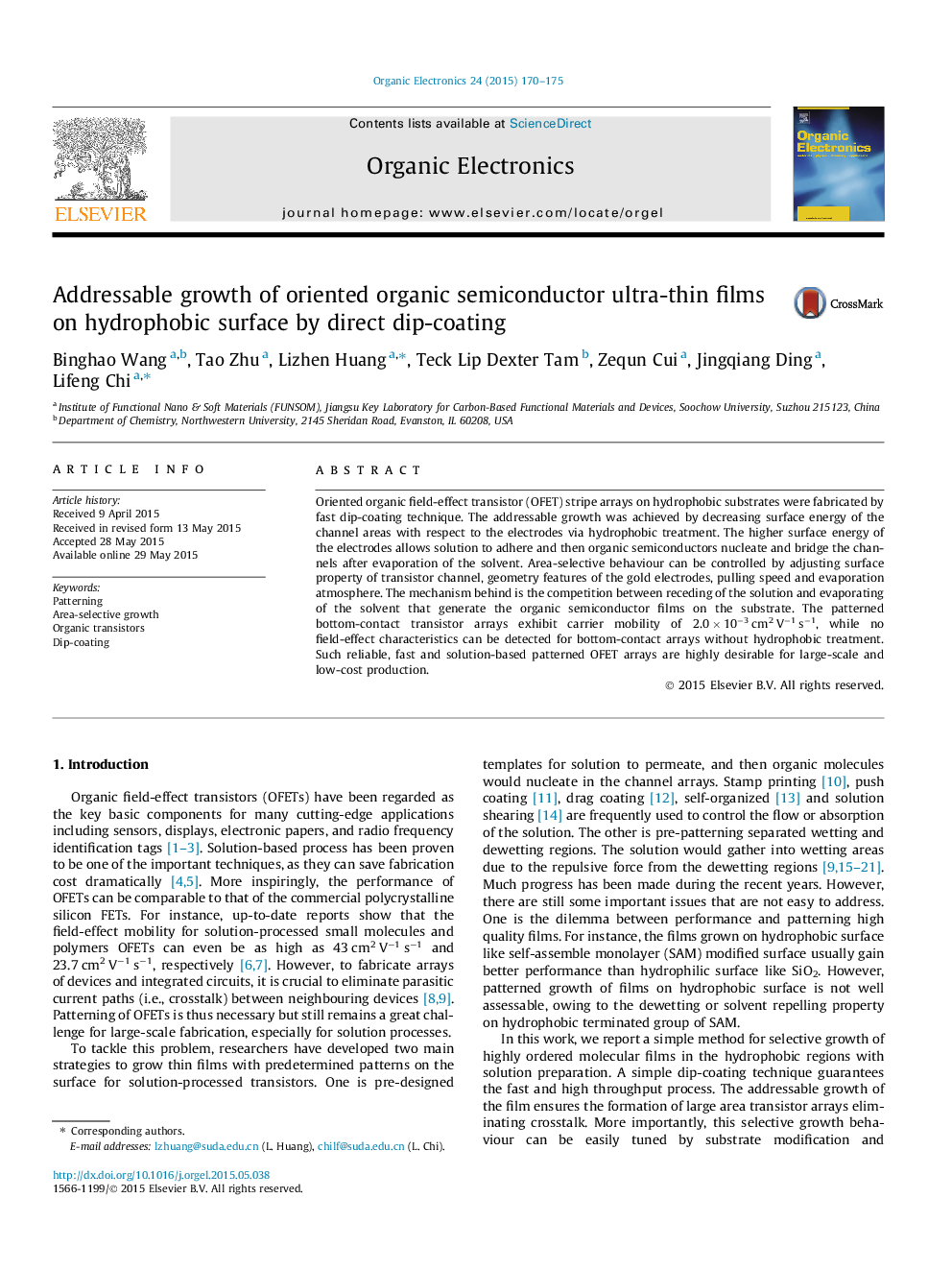| Article ID | Journal | Published Year | Pages | File Type |
|---|---|---|---|---|
| 1263693 | Organic Electronics | 2015 | 6 Pages |
•Fast dip-coating was firstly used to fabricate patterned organic transistors.•Ultrathin oriented microstripes were obtained on hydrophobic surfaces.•Area-selective behaviour of organic films can be finely controlled.•Patterned transistor exhibit reasonable field-effect characteristics.
Oriented organic field-effect transistor (OFET) stripe arrays on hydrophobic substrates were fabricated by fast dip-coating technique. The addressable growth was achieved by decreasing surface energy of the channel areas with respect to the electrodes via hydrophobic treatment. The higher surface energy of the electrodes allows solution to adhere and then organic semiconductors nucleate and bridge the channels after evaporation of the solvent. Area-selective behaviour can be controlled by adjusting surface property of transistor channel, geometry features of the gold electrodes, pulling speed and evaporation atmosphere. The mechanism behind is the competition between receding of the solution and evaporating of the solvent that generate the organic semiconductor films on the substrate. The patterned bottom-contact transistor arrays exhibit carrier mobility of 2.0 × 10−3 cm2 V−1 s−1, while no field-effect characteristics can be detected for bottom-contact arrays without hydrophobic treatment. Such reliable, fast and solution-based patterned OFET arrays are highly desirable for large-scale and low-cost production.
Graphical abstractFigure optionsDownload full-size imageDownload as PowerPoint slide
